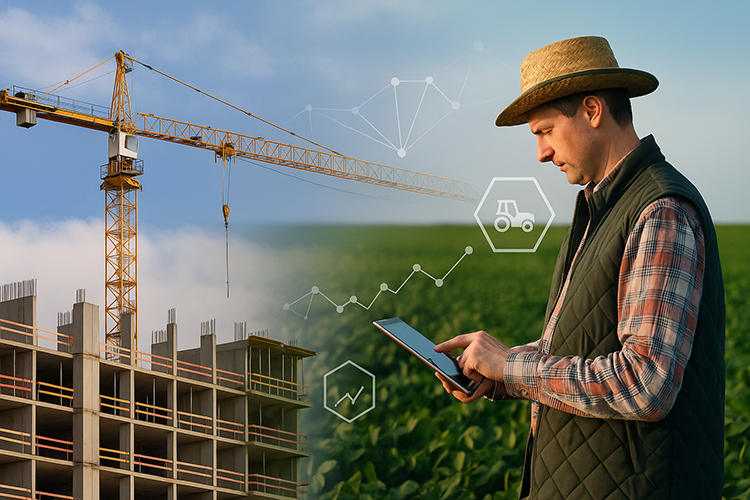Bridging the digital gap between construction and agriculture
A decade ago, agriculture was seen as one of the least digitised sectors. Today, it is among the most successful in combining traditional practices with advanced technology, using data-driven systems to improve productivity and sustainability. Construction, in contrast, has yet to achieve similar results in digitising core processes, despite investing heavily in modern machinery. While the industry adopts advanced equipment, many companies still rely on spreadsheets and paper drawings for project data.
According to Adam Heres Vostarek, Regional Manager at PlanRadar, artificial intelligence could act as a catalyst for change in construction, as it has in agriculture. Forecasts suggest the global AI market in construction could grow from USD 4.96 billion in 2025 to USD 14.72 billion by 2030. PlanRadar’s analysis shows that 97% of construction professionals expect to increase digitalisation investments, but progress is hindered by the absence of consistent, high-quality, and integrated data.
Agriculture addressed similar issues by first defining data standards, integrating sources, and ensuring consistency before deploying AI to identify patterns, make predictions, reduce costs, and improve efficiency. The example of European agricultural equipment manufacturer Agrifac illustrates this approach: its NEED Farming technology combines GPS, crop sensors, and environmental data to precisely manage water, fertiliser, and pesticide use, leading to higher yields and reduced chemical inputs. In the Czech Republic, more than 15% of arable land is now managed using such technologies.
In construction, however, adoption remains limited. Only 27% of workers report using AI, often infrequently, and 60% are unaware of any AI initiatives within their company. This indicates a lack of basic digital processes and infrastructure needed for effective AI use. Establishing systematic data capture, standardising procedures, centralising project information in cloud-based platforms, and providing regular training on digital tools are considered essential steps.
With a strong data foundation, AI could improve all stages of the building lifecycle. Generative AI could produce multiple design options in minutes, while predictive models could help manage schedules, anticipate cost overruns, enhance site safety, and reduce operational energy use.
Vostarek emphasises that agriculture’s transformation demonstrates the value of consistent data collection as a starting point. In construction, companies that move early to invest in data and digital skills may gain a competitive advantage, while slower adopters risk falling behind. He argues that the industry is already entering a digital transformation phase, and leadership will depend on those willing to change established practices and develop the necessary digital infrastructure.
Source: PlanRadar









